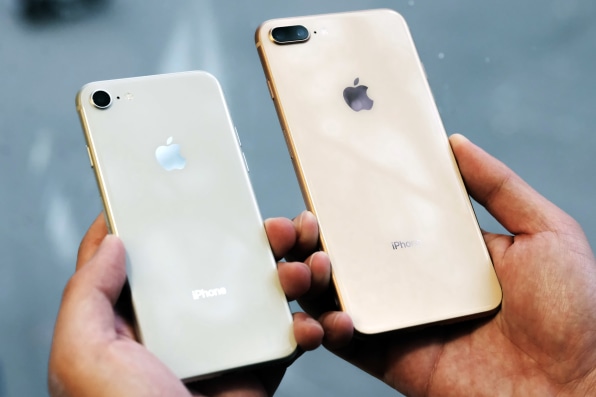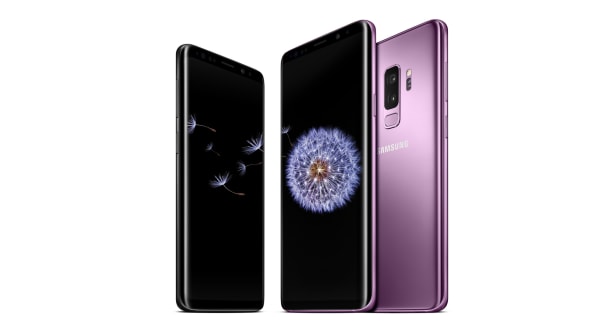How To Create Apple Id On Iphone Xs Max
If the leakers have it right, Apple will take the wraps off its largest-screen iPhone ever during the company's annual fall press event on Wednesday. The phone–which rumors say will be called the iPhone XS Max–will look similar to the iPhone X but will sport a massive 6.5-inch display. A phone that big is surely getting up into tablet territory–the display size of the iPad Mini 4 is 7.9 inches corner to corner. The dividing line between phone and tablet, as far as I'm concerned, is whether the device fits in a back pocket or not; a 6.5-inch phone will, but it's pushing it.
Apple isn't expecting the 6.5-inch to contribute to the majority of sales of this year's new line of iPhones, a source tells me. The big phone will be the most expensive of the new line; some analysts believe it will start at $1,099, commanding the same premium that Apple's Plus models have gotten over their smaller counterparts.
Apple's big reversal
Larger phones have become the norm as the amount and types of media we consume on our devices have greatly expanded in the past 10 years. Other factors play into their popularity: People with poor sight or fat fingers like bigger screens. Bigger screens mean less scrolling and zooming, which is important for social networking, mapping, and shopping.
Still, for Apple to make a 6.5-inch phone–even a skosh bigger than Samsung's Galaxy Note 9–is a little surprising. The company resisted larger phones for a long time. Steve Jobs famously declared back in 2010 that people don't want big phones. Referring to the larger Samsung handsets of the time, he said: "You can't get your hand around it . . . no one's going to buy that." He called the big phones "Hummers."
But by 2012 the market was sending Apple a different message. People were actually complaining to Apple about the small size of the iPhone, which had retained the 3.5-inch dimensions of the original 2007 model. Meanwhile, Samsung was giving its phone business a sizable boost by releasing larger phones. That year Apple released the iPhone 5, which had a 4-inch screen–a full half-inch larger than its predecessors, all through increased height rather than width. The 5s came the following year, keeping the same 4-inch screen size.
By 2014 the pent-up demand for larger phones among the Apple faithful was sizable. That's a big part of the reason that Apple iPhone sales went through the roof that year with the release of the iPhone 6 with a 4.7-inch display, and the iPhone 6 Plus with its 5.5-inch display.
The demand for larger and larger phones, including iPhones, continues today. "Large phones have come to represent the high-tier device; so it's pretty applicable across different geographies as an aspirational device," says Gartner analyst Tuong H. Nguyen.

Large isn't what it used to be
The fact that Apple has gotten over its initial distaste for large screens doesn't mean its initial caution was displaced. A 6.5-inch iPhone might illustrate the idea that a large display doesn't imply a large device in the way it once did. Phone makers, Apple included, have been stretching the display over as much of the front of the phone as possible. The useless bezel space around the screens is going away, so there can be more display space in a smaller form factor.
"Today, phones like the 8 Plus are giant to some, but if you essentially eliminate the bezel, it becomes much smaller," says Patrick Moorhead, principal analyst at Moor Insights & Strategy. "Therefore, Apple has a better chance of upselling [iPhone 8 owners] to the larger model." Moor is skeptical, however, that the 6.5-inch iPhone will lure new types of customers to buy iPhones for the first time.
Owners of later model iPhones might have another reason to be tempted by a 6.5-inch iPhone, as Creative Strategies analyst Caroline Milanesi explains.
"Having been a Plus user, I have to admit that moving to the X last year took a little getting used to," Milanesi said, "even if the size of the screen was almost as big, the phone did feel much smaller."
"Because of that I think the new larger iPhone might attract more upgrades from people who looked at the X last year and thought it was just too small for them," Milanesi says.
Where they'll sell
The appeal of a 6.5-inch iPhone may follow geographic lines to some extent.
"The Chinese market has always had a strong appetite for larger phablets (remember that word?), so it would be of little surprise that this larger iPhone would gain traction there," IDC research director of mobile devices and AR/VR Ramon Llamas writes in an email. "But I would not rule it out in other parts of the world, too," he adds. "For instance, the U.S. market has long been fans of phablets (see the Galaxy S9+, coming in at 6.2-inch), and there has been interest in other parts of Asia."
Gartner's Nguyen believes larger phones may be especially popular in countries that use a lot of public transportation, because commuters often consume all kinds of media on their phones to fill the time. "In APAC (Asia-Pacific), there may be cultural preferences," he says. "For example, valuing 'cuteness'–having a large phone next to your face and hands makes you smaller (cuter) in comparison."

Sparring with Android
One key question is whether Apple can lure some users from the Android side with the larger phone. The competition is stiff, with Samsung's Galaxy Note S9 having an impressive 6.4-inch OLED display.
However, the bezel question could end up being a tie-breaker for someone deciding between a Samsung Note and an iPhone. The Note 9's display curves off the left and right sides of the front, but there is a strip of unused black bezel space at both the top and bottom–forehead and chin, in geek-speak–of the device.
The reason for the notch that's showing up on all kinds of phones now is to avoid having to give up that entire horizontal strip at the top of the display to bezel. Instead, phone makers, Apple being one of the first, figured out how to notch out a little island of bezel at the top of the phone where the microphones, camera, and sensors can go. Apple also designed a special kind of OLED display that bends over the bottom of the phone, two analysts told me, eliminating almost all of the bezel there.
The end result of these differences is that the iPhone appears to have less body and more display.
Apple's achievement of making a phone, the iPhone X, with a front that's almost all display was a difficult one, but significant. A 6.5-inch iPhone may put that achievement in an even more dramatic light. Apple has on numerous occasions talked about its desire to put digital content out front and let the hardware fade into the background. With the "iPhone XS Max," it may have pushed that concept further than ever before.
How To Create Apple Id On Iphone Xs Max
Source: https://www.fastcompany.com/90234197/the-new-huge-screen-iphone-xs-max-is-intriguing-in-a-big-way
Posted by: dipalmadight1942.blogspot.com

0 Response to "How To Create Apple Id On Iphone Xs Max"
Post a Comment